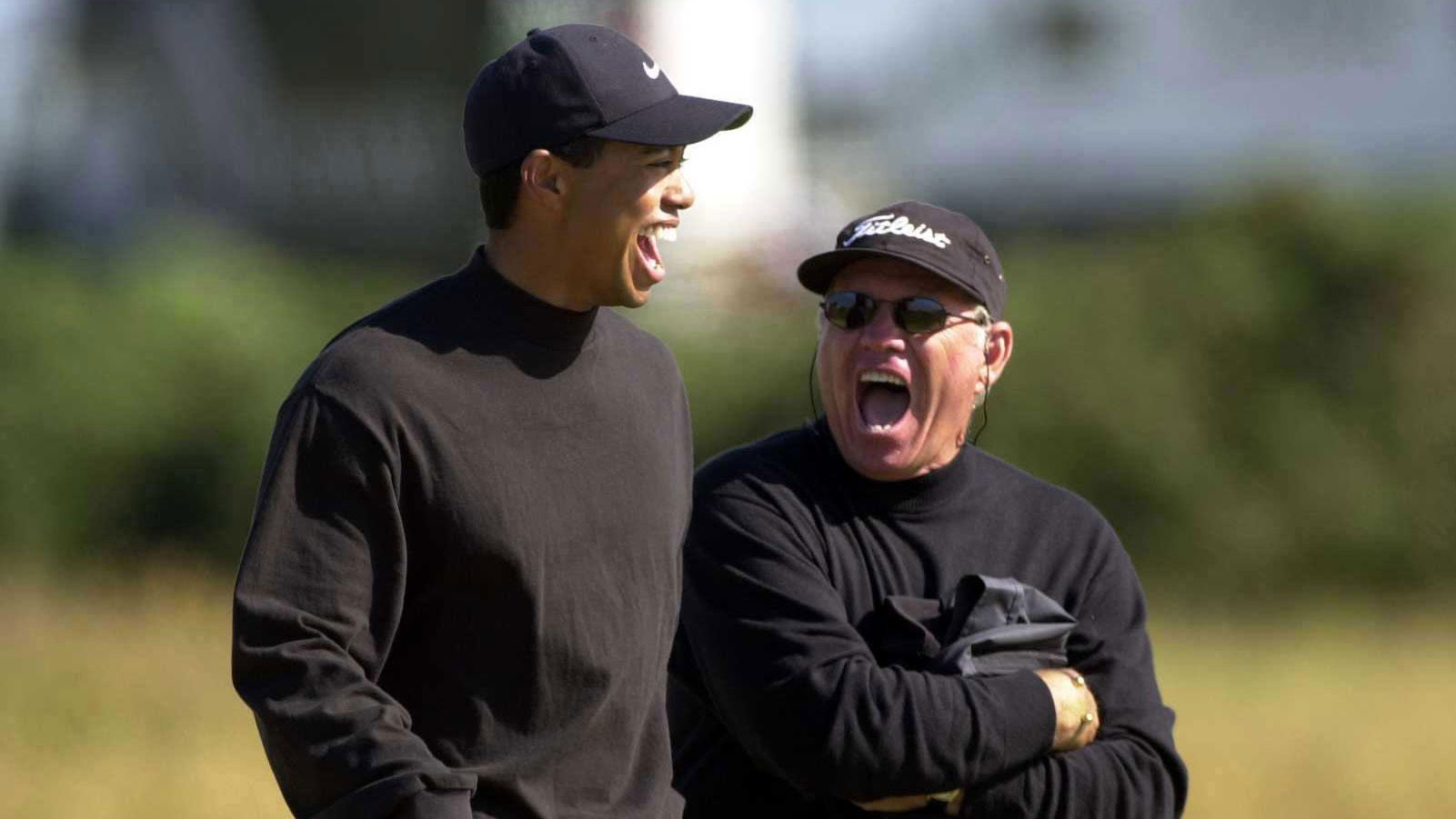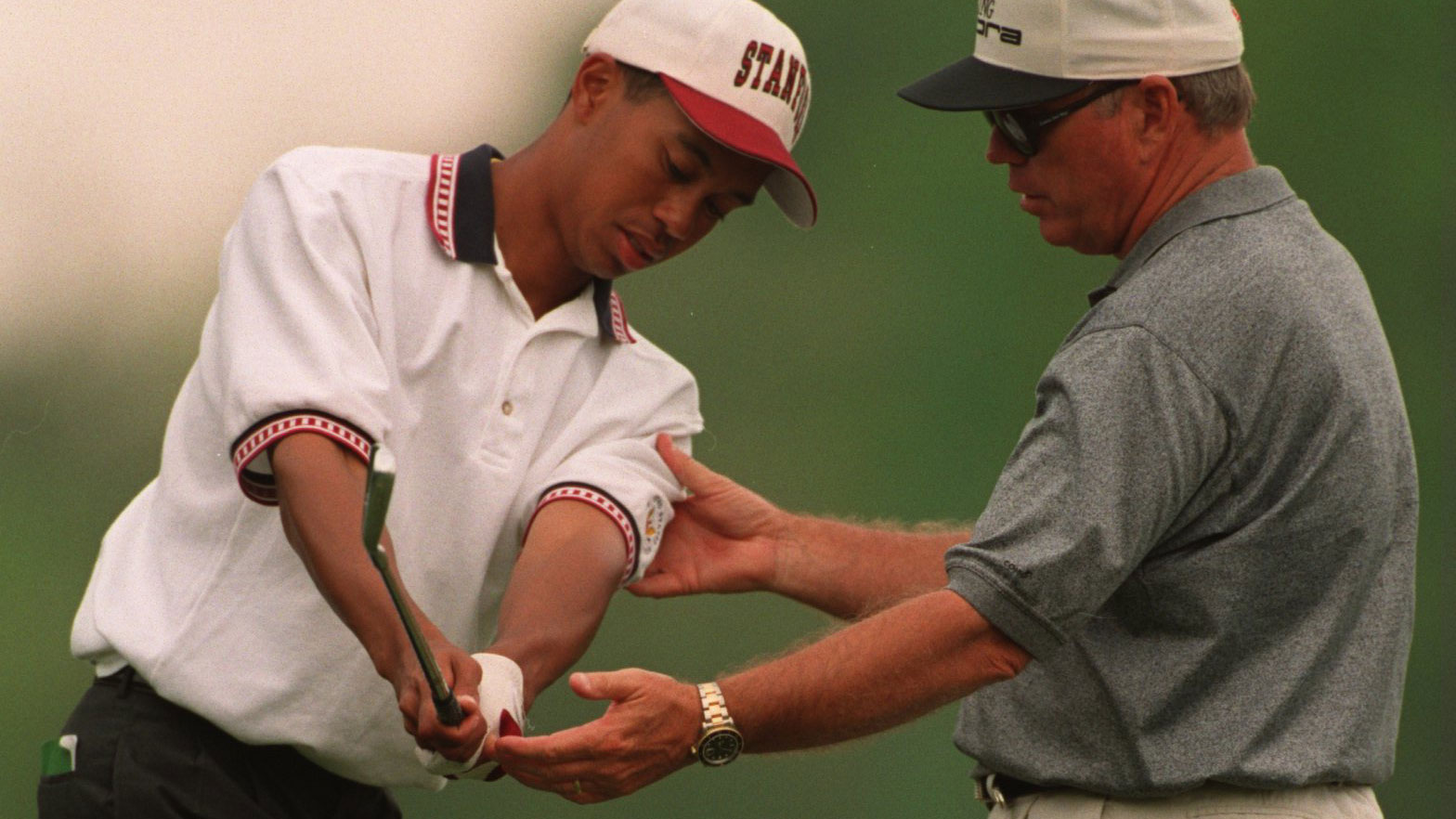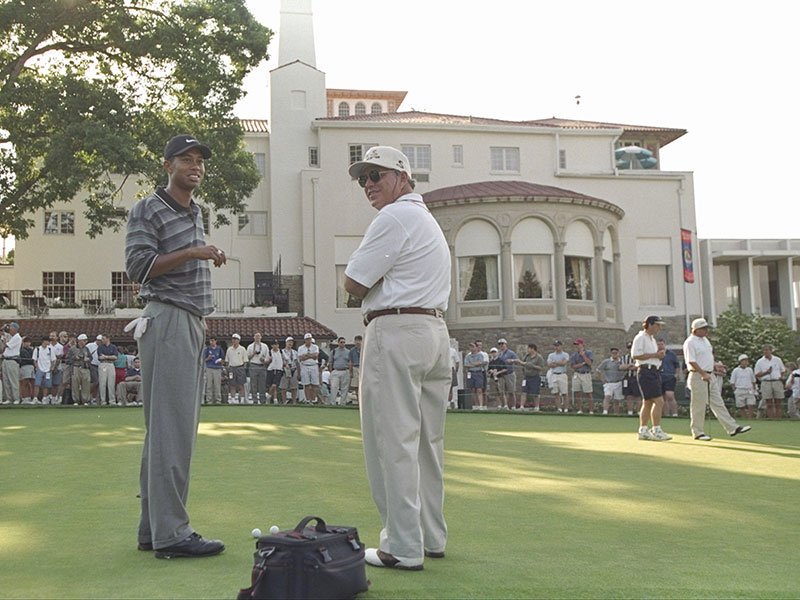
Tiger Woods lost in the second round of the 1993 US Amateur Championship at Champions Golf Club in Houston. At 17 there was no shame at all, particularly as Woods had just become the first golfer to win the US Junior title three years in a row. Just 12 miles east from Champions GC is the private enclave of Lochinvar Golf Club, where Butch Harmon worked at the time.
Tiger’s father, Earl, had heard a lot about Harmon, particularly as Harmon’s star pupil, Greg Norman, had just stormed to a famous victory in The Open at Royal St George’s, playing some of the best golf ever seen. Woods Senior was searching for a coach to guide his son from the amateur ranks to the professional and so they paid Harmon a visit.
“I knew about Tiger before we’d met,” recalls Harmon. “I knew his history and I knew of some of the problems he had as a black kid trying to get on golf courses. He was sometimes wrongly accused of causing problems at golf clubs, but it was never him. Tiger knew how to behave and he loved the game.
“I still have the film from those two days at Lochinvar. It was August 1993, and throughout the ten years I worked with Tiger, he would say to me, ‘You don’t still have that film of me when I was a skinny kid, do you?’ I would put it on and Tiger would say, “I hate looking at that! Look how skinny I was! Look at my swing!’ And I would say, ‘Yeah, but remember how good you were for your age’.

'Natural, Raw Talent'
“When I first saw Tiger swing a club, standing there was a tremendous amount of natural, raw talent. He was like a trophy that needed to be polished. The natural ability needed to be brought along, but the raw talent and self-confidence of the young man were amazing,” Harmon adds.
“That day I said to Tiger, ‘Everybody has a go-to shot on a tight driving hole, like a little fade. What is your go-to shot?’ He said, ‘Nah, I just hit the ball as hard as I can, go and find it and hit it again’. That really is how Tiger thought. He was not being arrogant, but he was an aggressive player. In those days, he did not have the ability to work the ball both ways. He just hit the ball and found it, hit it and found it and then made the putt. That was his theory and he was pretty damned good at it.”
Soon afterwards, Harmon and Earl – both Vietnam vets – came to an agreement, as Harmon recalls: “I said to Earl that if I work with your son and then he goes home and you dispute what I am saying, it probably wouldn’t work. So if you don’t think you can turn him over to me, it is probably not a good thing. Earl said, ‘I’ll make a deal with you: I won’t try and be his golf coach if you don’t try and be his dad’. That was fine with me.”
Harmon did not issue Woods with an invoice until he turned professional. By the time they parted ways ten years later, Woods had won eight of his 15 Major titles and produced probably the best golf ever played, particularly during the ‘Tiger Slam’ run in 2000 and 2001.








